Helen H. Moore's Blog, page 234
November 20, 2017
Isn’t it iconic, Don’t you think? DeWanda Wise sheds new light on the role of Nola Darling

“Baltimore Rising”: Questing for justice from the ground up
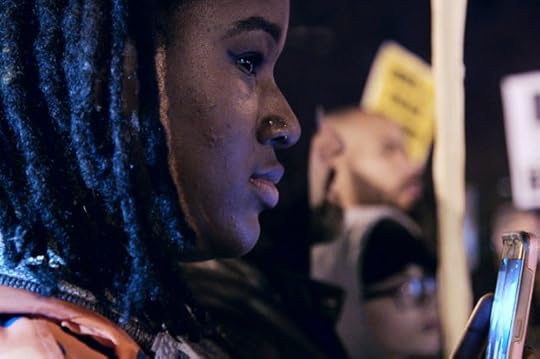
Makayla Gilliam-Price (Credit: HBO)
Do not be surprised by any bubbles of frustration that may surge within you while watching Sonja Sohn’s documentary “Baltimore Rising.” Do not let that stop you from watching it either, despite its fragmented presentation of narratives that meet at some junctures but rarely blend neatly.
In taking on the chronicling of around a year of Baltimore’s black community in the wake of 25-year-old Freddie Gray’s death in April 2015, Sohn has the fraught task of finding connections between numerous opposing forces. And she’s able to do this with some measure of grace, even as the film presents no neat conclusions beyond an ambiguous, fragile sense of hope.
“Baltimore Rising,” debuting Monday at 8 p.m. on HBO, cannot ameliorate the unsatisfactory outcome of Gray’s case. The passion of activists and organizers seen in “Baltimore Rising” and the challenges faced by Baltimore authorities struggling under a cloud of corruption seems to net very little by the end of the documentary’s 93 minutes. Even the young Makayla Gilliam-Price, one the most fired up among the leaders of this nascent movement, admits that the protests to which she devotes herself make an impact in the community but have no concrete strategy attached.
“It’s not the most productive option,” she observes.
But the lines between a tragedy and a just outcome are rarely straight, and those familiar with the fates of the six officers involved in the events surrounding Gray’s death while in police custody already know it as a case of justice denied. Despite this truth, the film’s portrayal of what one man refers to as the theater surrounding the trial, creates an effective study of activism, collaboration and the corrosion of racial and economic inequality from the ground up.
Sohn is probably best known to viewers as Detective Kima Greggs from David Simon’s extraordinary drama “The Wire,” but her desire to create “Baltimore Rising” stemmed from the five years she spent as a co-founder of a nonprofit dedicated to assisting young parolees called ReWired for Change. When Gray’s death sparked riots that burned through Baltimore’s streets, Sohn was on the ground with the cameras rolling not long afterward.
Her knowledge of the community enabled her to find an array of interesting, imperfect subjects who lead her through this complicated story with a measure of authority. Their candor allows “Baltimore Rising” to view Baltimore as a microcosm of activism, both from the broad lens of strategy and tighter stories with personal stakes. And while this fleshes out the documentary’s examination of resistance and collaborative effort, it also balances this with the hard truth that the fruit of most individual protests is not harvested by their participants in the short run.
Sohn assembles an array of captivating subjects in “Baltimore Rising,” some of whom immediately hook the viewer. Gilliam-Price is a stand out, thanks in no small part to her youth and broad knowledge regarding civic and political engagement; she’s a high school student seen teaching first-time protesters, who are much older than her, about the effectiveness of various tactics.
On the other side is Police Commissioner Kevin Davis, who assumed his role following Gray’s death and is seen engaging with representatives from the community in an effort to change the toxic perception of his department.
But although Sohn shows him in meetings, demonstrating that the will may be there, a brief history lesson within the documentary implies that any impact he’s able to make will be mildly analgesic at best. Men such as Lt. Colonel Melvin Russell, seen in day-to-day interactions with families in the community as well as on the blue side of the line during protests, represent the hope Sohn clearly has. As the camera shows us when other officers such as Dawnyell Taylor cheer the acquittal of an accused colleague, transformation is going to take much more than the efforts of a few men and women in law enforcement walking the streets of their community.
Davis and Russell explain that the problem is systemic and entrenched: Officers don’t feel safe doing their jobs, so they either don’t get out of their cars or they fear for their lives when they do and react accordingly. Men and women in the community, meanwhile, learn from a history of over-policing that the system holds little real chance of justice for them. Davis and the community members he works with spell out the solutions for Baltimore’s problems in a way that make sense. He points out that in order for there to be genuine change in poor communities of color, other governmental departments need to pull together to help people access affordable housing, gain employment that can support families and improve the educational system.
“If folks are waiting for the police departments of America to do it,” he says, “they’re going to be out of luck.”
There’s a moment of lightness in the midst of the documentary where local cops and members of the community play a football game, organized by ex-gang member Genard “Shadow” Barr. It’s a PR opportunity for Davis’s department and a temporary relief for the community that cools the narrative’s simmer somewhat. Whether this is a welcome detour or unnecessary to the story depends, I suppose, on the viewer’s emotional state.
“Baltimore Rising” is more effective when it challenges our notion of a leader’s role, especially as they pertain to social movements. This plays out directly in the story of Kwame Rose, who inadvertently became the face of a movement when his angry confrontation with Fox News’ Geraldo Rivera indicting the national media’s coverage went viral.
Throughout the documentary, we see Rose willingly put himself on the front lines and provoking police into arresting him, but Sohn doesn’t shy away from showing his astounding naivete and aimlessness. In one scene, his parents ask him to stop protesting and think about his future. He refuses, telling them, “I don’t think about long term. I don’t really have a longing for material possessions.”
His mother and father translate this for him: “You’re homeless,” his mother says. “You’re broke,” adds his father. To which Rose stubbornly replies, “I don’t want responsibility.”
There are many such moments of human frailty and humor in “Baltimore Rising, and Sohn presents all of it without specific judgment or an agenda beyond capturing as many voices as possible and corralling them as efficiently as possible. Such an approach may be frustrating for anyone searching for a concrete message at the center for “Baltimore Rising.” There isn’t one, but many. Listening to each of them may be a small step toward resolution.
Charlie Rose accused of sexually abusing 8 women

Charlie Rose (Credit: AP/Andy Kropa)
Charlie Rose, longtime PBS host and current co-anchor of CBS’ “This Morning,” has been accused of sexually harassing eight women, some of them his employees. Following a report published Monday in the Washington Post, CBS, PBS and Bloomberg, where Rose is a contributor, have all suspended the host pending reviews.
In their exposé, reporters Irin Carmon and Amy Brittain detail an alleged pattern of abuse of power and abuse of women going back to at least the 1990s, one that saw job applicants, show staff and personal assistants weather inappropriate propositions, language and touching. One alleged victim claims she was fired for sharing their stories of harassment with another co-worker. Another claims Rose sexually assaulted her at his home.
In all, Brittain and Carmon’s report is as damning and disturbing as many others we have seen in recent months following the twined exposés on Harvey Weinstein’s alleged history of abuse from the New York Times and The New Yorker. It also speaks to the unearned safety industries provide their leaders, even when their misconduct is an almost-open secret.
Most troublingly, Brittain and Carmon spoke to a woman who claimed that she reached out to Rose about a future in broadcast journalism in 2009. The anonymous woman, who was in her mid-30s at the time, says that she discussed careers with Rose, who would meet her over lunch or furniture shopping. He once put her hand on her knee but then said, “I hope you don’t mind, I’m from the South, we’re touchers,” according to her.
Later, he would hint at a job. “He talked about this position,” the alleged victim said, “which he referred to as being his intellectual partner, that I would be the executive producer for global content.” Saying that Rose was offering a salary of $120,000, she claims he invited her to his Bellport, New York house to iron out details over the weekend, claiming she would have a wing of it to herself. After dinner, the victim alleges that she and Rose returned to his house where he changed into “a white bathrobe, which was open; he wore nothing underneath.” As Carmon and Brittain report:
“I thought, I’m doomed,” she said. “I was completely panicked. In retrospect, I thought of a million things I could have done.”
She said she was not intoxicated — Rose had drunk his wine and then hers at the restaurant — but said he appeared to be. It was nearly 2 a.m. and she was exhausted, she said. She also said she felt alone and powerless. It was the middle of the night, they were on his secluded property, and she did not know how to drive.
“I started talking in this feeble and compulsive way,” she said. “I started talking about power, how the abuse of power can be. He completely lost it. ‘What are you talking about? That’s certainly not the case.’ ”
She said he then tried to put a hand down her pants.
“By the time he touched me the first time, he was already very angry,” she said. “I was scared, and I was also kind of frozen.”
After that, her memory is “hazy,” she said. They ended up in his bedroom
The unnamed accuser then claims that she doesn’t remember what happened next, except for the fact that she was, “crying the entire time,” that he tried again to put her hand down her pants and she only made her escape when he fell asleep. When she would follow up on the job offer days later, “He replied with his regrets.”
The woman would later, on a friend’s suggestion, package what she says happened between her and Rose into a semi-fictional short story called “The Hunt” (“I was hunting for a job . . . and he was hunting for me,” she told the Post). Carmon and Brittain write that, “She said she submitted the story to several magazine editors in 2010 and 2011. Paris Review editor Lorin Stein declined to publish the story but wrote to her in March 2011, ‘It has the ring of truth (alas).'”
This is only the most potentially criminal of the accusations against Rose. Others, some of whom gave their names to the reporters, offer stories of similar grooming, of bursts of outrage, of unwanted embraces and of the touching of the breasts, buttocks and thighs. All of their stories are worth reading fully in Carmon and Brittain’s article.
Somewhat unsurprisingly, all the women the two talked to reported being completely intimated by Rose.
“Everybody is terrified of him,” said one of the women. “He creates this environment of constant fear. And then he’ll shine a spotlight on you and make you feel amazing.”
Supposedly, the behavior — which was an open secret in much of the industry — was worst within the small staff of Rose’s self-titled talk show. Some of the women talking to the Post claim producer Yvette Vega shrugged off their complaints, something she does not deny. “I should have stood up for them,” she told the Post “I failed. It is crushing. I deeply regret not helping them.”
Rose himself did not deny the accusations in an extensive comment to the Post, though he seemed to blame for his alleged behavior. “In my 45 years in journalism, I have prided myself on being an advocate for the careers of the women with whom I have worked,” Rose said. “Nevertheless, in the past few days, claims have been made about my behavior toward some former female colleagues.”
He continued, “It is essential that these women know I hear them and that I deeply apologize for my inappropriate behavior. I am greatly embarrassed. I have behaved insensitively at times, and I accept responsibility for that, though I do not believe that all of these allegations are accurate. I always felt that I was pursuing shared feelings, even though I now realize I was mistaken.”
He ends saying, “I have learned a great deal as a result of these events, and I hope others will too. All of us, including me, are coming to a newer and deeper recognition of the pain caused by conduct in the past, and have come to a profound new respect for women and their lives.”
It is a non-apology not far from the ones Louis C.K. and Kevin Spacey offered in connection to their own patterns of alleged misconduct. It’s a format we’ve already seen too often, and one that has saved neither of those mens’ careers. The following days will see how it serves Rose.
Take flawless holiday photos with this smartphone lens kit
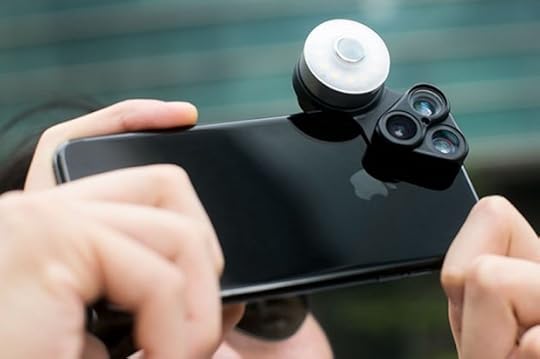
Every year when it’s time to take the massive family photo there ends up being some kind of flub — a finger in the frame, a poorly lit shot or a shaky finger. This is the year it’s going to be different with RevolCam: The Multi-Lens Photo Revolution for Smartphones.
This compact, easy-to-use kit fits on any smartphone, and includes three high-quality camera lenses, an adjustable brightness LED and a selfie mirror all on the same device. You can easily switch between wide angle, fisheye, and macro lenses thanks to the revolving design of the device, and with the brilliant lighting options you practically get the same functionality as a DSLR — with the same photo quality.
Capture your memories perfectly this holiday season: this kit is not only completely portable, you can also control light manually with 230 levels of light available. You can also sneak a minute away from family time and take the selfie that’s sure to get you all the likes on Instagram.
Take the photo that’ll end up being the holiday card: usually this RevolCam: The Multi-Lens Photo Revolution for Smartphones is $59, but you can get it now for $34.99, or 40% off the original price. You can also use code GIFTSHOP15 for an additional 15% off the sale price!
Who’s afraid of Steve Bannon?

(Credit: AP Photo/Susan Walsh)
Steve Bannon would have you believe that he stands at the crossroads of history, directing traffic. Ever since he emerged as a national political figure in the latter stages of Donald Trump’s presidential campaign, the Breitbart.com chairman has cultivated a reputation as a wily tactician, the leader of a nascent nationalist revolution, and a visionary whose dreams of a new political order are just beginning to come to fruition. During his brief tenure as chief adviser to President Trump, his various power grabs and heavy-handed policy maneuvers led to the perception that “President Bannon” was the real power in the White House.
Bannon understands the value of this reputation as a mad political genius and he does what he can to play the part. Most quotes you’ll read from Bannon in the press are studded with flamboyant self-promotion and mustache-twirling exposition typically reserved for Golden Age comic book villains. “Darkness is good,” Bannon told The Hollywood Reporter shortly after the 2016 election. “Dick Cheney. Darth Vader. Satan. That’s power.” Bannon has reportedly described himself as a “Leninist” who wants to “destroy the state … bring everything crashing down, and destroy all of today’s establishment.”
This theoretical Steve Bannon is constantly luring his unwitting enemies into traps and is always winning even when it looks like he’s losing. He is Rasputin, Machiavelli, and Doctor Doom all in one rumpled package.
It’s all a crock. In the real world, the genuine Steve Bannon spent the past week haphazardly slinging conspiracy theories and sounding like an unglued lunatic in an ineffectual bid to rescue Alabama Republican Senate candidate Roy Moore from multiple reports of sexual assault and child molestation.
The damage-control operation kicked into gear even before news of Moore’s alleged misconduct was first reported by The Washington Post. After the Post approached the Moore campaign asking for comment, the campaign fed the scoop to Breitbart reporter Aaron Klein. Klein obligingly published a piece that ran interference on behalf of Moore, framing everything around his denials and casting the Post as an untrustworthy and biased villain.
The pre-emptive knockout didn’t work, so Bannon took more aggressive measures. He dispatched Klein and Breitbart Washington Political Editor Matt Boyle to Alabama to, in the words of Axios’ Jonathan Swan, “discredit the Washington Post’s reporting on Roy Moore’s alleged sexual misconduct with teenagers.” This escalation produced similarly disappointing results: Klein ended up filing an “exclusive” that claimed to undermine the Post’s reporting but accidentally confirmed it, while Boyle spent his time counting the number of applause breaks during a Moore speech.
While Bannon’s crack journalists were bumbling around Birmingham, he got busy trying to spin up a protective narrative around Moore. But without any exculpatory evidence to lean on and with mounting proof of Moore’s guilt, Bannon could go in only one direction: a far-reaching anti-Moore conspiracy.
Speaking at a political event in New Hampshire shortly after the Post story broke, Bannon said he found it “interesting” that “the Bezos-Amazon-Washington Post that dropped that dime on Donald Trump, is the same Bezos-Amazon-Washington Post that dropped the dime this afternoon on Judge Roy Moore. Now is that a coincidence?” Even though he hadn’t proved (or even directly alleged) any malfeasance on the Post’s part, Bannon congratulated himself for taking a stand against the media. “I don’t mind it. I’ll call them out every day.”
As Moore’s political standing deteriorated and national-level Republicans began distancing themselves from his campaign, Bannon started arguing that the conspiracy ran deeper than anyone could possibly imagine. “You’re going to find out that what happened down there was Republican operatives had this information or were concocting some of this information, working with the Washington Post, who is lying about this,” Bannon said on Breitbart News Daily. He also identified the unlikely mastermind behind it all. “This is just another desperate attempt by Mitch McConnell to keep power,” Bannon said of the Senate majority leader, “and it’s not going to work.” It might seem counterintuitive that the leader of the Republican Senate majority would sabotage his own party’s nominee and reduce his party’s majority as a means of retaining power, but, then again, most of us can’t see around corners like Bannon can.
The reason Bannon and Breitbart.com rode to Moore’s rescue is that Bannon — who, again, glides along on his reputation for political vision — put Moore in the vanguard of his “economic nationalist” movement. Bannon broke with Trump to endorse Moore, and he was the headline speaker at Moore’s rally the evening before the September 26 primary runoff election. “Tomorrow is going to decide who has sovereignty in the United States of America,” Bannon told the crowd in characteristically grandiose fashion.
Anyone with an ounce of prudence would have been extremely wary of so tightly aligning himself with Moore, whose political career prior to the sexual assault reports was defined by extremism and controversy. But Bannon doesn’t do caution. He’s leading a movement that deliberately stokes racial resentments, places national identity above all other concerns, and actively rejects multiculturalism. Such a movement can’t help but attract kooks, racists, and extremists. It’s Bannon’s job to make them respectable and, if possible, elect them to high office.
Bannon’s gamble on Moore blew up spectacularly, as anyone with even a passing familiarity with Moore’s background could have told you it very likely would. It’s become so damaging that, as The Daily Beast reports, Bannon and his lackeys are belatedly second-guessing their continued support for Moore as the accusations against him have mounted. According to the outlet’s sources, Bannon said, “I will put him in a grave myself” if it turns out Moore lied about committing sexual assault.
This is classic Bannon — it sounds threatening and supervillain-ish, but when you actually think about what he’s threatening, it’s completely empty and ludicrous. According to Bannon, if it’s proven conclusively that Roy Moore lied about molesting children, then Bannon will personally see to it that Moore’s reputation and political career are finished — as if there’d be anything left at that point for Bannon to put in a “grave.” Bannon’s more immediate concern is salvaging his own reputation as an electoral savant and hoping everyone will forget that he was reckless enough to make an accused sex criminal the face of his political movement.
Why the Crusades were not a “clash of civilizations”

(Credit: AP Photo/Mahmoud Illean, File)
Ask pretty much anyone – whether terrorists, politicians (of all camps), dinner party guests, or religious leaders – and the one thing that they will say with confidence about the Crusades is that they were a conflict between two diametrically opposed religions: Christianity and Islam – a clash of civilizations. This is a widely-held judgement – but is it correct?
The First Crusade (1095-1099) – the massive expedition that marched across Europe and the Middle East to capture Jerusalem – underlines some of the difficulties surrounding this toxic assessment. These became evident during research I conducted for two books: Encountering Islam on the First Crusade and The Field of Blood: The Battle for Aleppo and the Remaking of the Medieval Middle East (forthcoming).
Problems become clear from the campaign’s outset. The documents produced by crusaders preparing for the journey, known as charters, only occasionally mention any enemy and concentrate their attention on reaching and conquering Jerusalem.
Of course, they knew that achieving this objective would require warfare, but they demonstrated little interest in their enemies’ identity, often labeling them as “pagans” – essentially, “non-Christians.” Jerusalem at this time was steadily moving into the epicenter of contemporary religious culture and it was this goal that galvanized thousands to participate, not the desire to attack an enemy religion.
The pope’s military objectives were more mixed. In addition to Jerusalem, Pope Urban II also wanted crusading knights to defend the distant Byzantine Empire against attack – but this aspiration does not seem to have resonated with his audience in the same way as the thought of reaching the Holy Land.
Uninformed and Uninterested

The crusaders didn’t know a great deal about their ‘enemy’.
Shutterstock
By extension, throughout the crusade, the Franks (crusaders) proved both uninformed and uninterested in the Islamic faith (or the “Saracen law” as it was known). They knew “Saracens” to be non-Christians and some were vaguely aware of the division between Sunni and Shia Islam, but rarely more. A few thought erroneously that Muslims were polytheists. Even many years after the crusade, one 12th century Western writer, William of Malmesbury, in his Gesta Regum Anglorum, found it necessary to explain that “Saracens” did not practice the same faith as Baltic pagans.
In short, Jerusalem, not Islam, was the target and they knew little about this religion.
On campaign, the crusaders’ main opponents were the Seljuk Turks. The Turks were originally a largely shamanistic and nomadic people who had migrated from the Central Asian Steppe region to conquer much of the Muslim world during the century preceding the crusade. They had seized Syria and the Holy Land only 20 years previously.
By the 1090s, the Turks had begun to convert to Islam but many retained elements of their former beliefs. During the crusade – and in later decades – observers noted that some Turks still (among other things): buried their dead with grave goods, scalped enemies, and conducted colossal drinking parties. All these customs reflected their former traditions and many of these and other practices conflicted with Islamic teaching. So the Turks – the crusaders’ main opponents – were hardly longstanding adherents of Islam but instead were part of the way through a long-term process of religious transition.
Then, with the escalating conflict brought about by the crusaders’ advance into Turkish territory, several local peoples rebelled against the Turks. These included many native Muslim communities who wanted to throw off their Turkish overlords. And while some were prepared to fight against the crusaders, many remained neutral and some – especially following the crusade – sought crusader assistance (which the crusaders were prepared to offer). Some Bedouin tribes began to cooperate with the Franks soon after the First Crusade.
Endgame
The crusade’s final act occurred in 1099 with the conquest of Jerusalem from the Fatimids (the Shia Muslim rulers of Egypt), following a hard-fought siege. The city’s fall concluded with a general massacre of its population (around 3,000 people were killed, both Muslims and Jews) that was explicitly described by its perpetrators as an act of religious cleansing.
This deed has long been taken as proof of the crusaders’ anti-Islamic hatred. Even so, there are problems with this kind of assessment. The crusaders’ actions in Jerusalem are not mirrored by their behavior towards Muslims elsewhere. They did perpetrate several massacres throughout the crusade. In the Near East these typically occurred when a town refused to surrender to their forces and consequently was taken by storm. Having said this, they were also open on other occasions to cooperative action and treaties with the Near East’s non-Christian powers.

The target: Jerusalem, as it is today.
Shutterstock
Indeed, since 1097 both the Fatimids and the crusaders had been trying to forge a mutually beneficial alliance against the Turks. It was only when these talks collapsed that the crusaders’ initiated their siege on Jerusalem. They also admired many of the enemy leaders and warriors who they encountered, either over the negotiating table or on the field of battle, noting their strengths and virtues. One source, entitled the Gesta Francorum, even suggested that the Turks and Franks might be related to one another.
It seems more likely that the massacre was connected more to the crusaders’ ideological ideas surrounding the sanctity of Jerusalem itself than to any specifically anti-Islamic sentiment. According to this script, the crusaders deemed any non-Christian presence within its walls to be spiritually unacceptable, but this did not inhibit cooperation elsewhere.
In this way, the crusade was an event of enormous brutality, yet it defies easy classification as a clash of civilizations. The crusaders were not generally interested in Muslims/Islam, aside from the plain fact that they were non-Christians. They were prepared to ally with Muslim communities when it served their purposes and their primary opponents were only partially Islamified. The regions’ local Muslim populace found itself trapped between two conquerors (crusaders and Turks) and forced to take sides, many opting to resist the Turks.
 It is fashionable today in some circles to characterise the First Crusade as a “clash of civilisations”, but in the 11th century, the reality was considerably more nuanced.
It is fashionable today in some circles to characterise the First Crusade as a “clash of civilisations”, but in the 11th century, the reality was considerably more nuanced.
Nicholas Morton, Lecturer in History, Nottingham Trent University
November 19, 2017
Nobody is going to bail out Venezuela
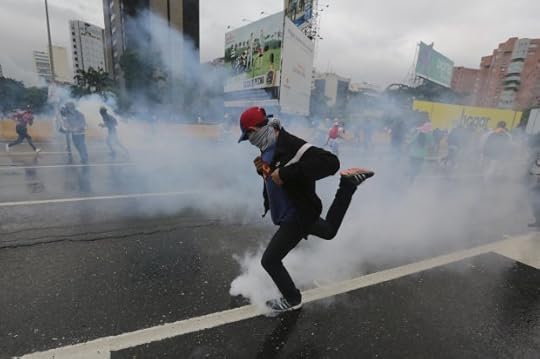
(Credit: AP Photo/Fernando Llano)
Venezuela, the South American country convulsed by economic and humanitarian catastrophe, has defaulted on some of its debt after missing an interest payment due in October.
Even as investors meet in Caracas to discuss restructuring US$60 billion in foreign debt, the country is in urgent need of international financial assistance.
Yet few nations are rushing in to aid the ailing country. Under the authoritarian regime of Nicolás Maduro, Venezuela is isolated in Latin America, and the United States, Canada and the European Union have all imposed sanctions against Venezuelan officials. Maduro has at times suggested he would not even accept humanitarian aid.
Still, no indebted nation is totally alone in this world. As a financial analyst, I know there are always international players who see opportunity in the problems of others. And for Venezuela, my home country, all hope of a bailout rests with China, Russia and the International Monetary Fund.
Will they do anything to help?
Venezuela’s debt: By the numbers
Before exploring a possible Venezuela rescue, it is useful to understand how the country’s debt became such a burden.
In 1998, the year before the late Hugo Chávez came into power, Venezuela was rich. It produced roughly 60 barrels of oil per inhabitant per year. By late 2017, my projections – based on data compiled from Venezuela’s National Statistics Institute and BP’s World Energy Report 2017 – show that production will have dropped to 20 barrels per capita. That’s a 66 percent drop in 20 years.

Oil output per capita in Venezuela has dropped significantly in the past several decades.
Henkel Garcia/BP Statistical Review of World Energy 2017/National Statistics Institute, CC BY
Even as output steadily shrank, Chávez benefitted from relatively high oil prices, which allowed him to boost revenue from petroleum exports. And as oil sales rose, so did government expenditures, as well as imports of food and other goods.
Eventually, excess spending took a toll on Venezuela’s international reserves. Rather than cut expenditures and imports, the Chávez regime piled up foreign debt.

As exports (US$ per capita) rose, so too did government spending and imports.
Banco Central de Venezuela, FRED (Federal Reserve Bank of St. Louis), National Statistics Institute and Econométrica IE, C.A., CC BY
Then, in late 2014, international oil prices began to plunge. Today, estimates indicate that Venezuela’s public sector debt tops $184.5 billion, including $60 billion in foreign debt, though the Venezuelan Central Bank claims it’s much lower.

Venezuela’s foreign public debt, in US$ million, is at an all-time high.
Venezuelan Central Bank, CC BY
To service this debt, the government must pay $16 billion to $20 billion a year through at least 2022. Shouldering that huge expense has meant slashing imports, causing food and medicine shortages. As a result, almost 54 percent of Venezuelan children are malnourished.
To ensure its citizens’ basic well-being, Venezuela must be able to import, on average, $1,000 a year per inhabitant – or roughly $33 billion a year. My data show it’s currently bringing in about half that.
No Chinese largess
As an oil producer, Venezuela’s desperation rouses geopolitical interests.
Venezuela owes $28.1 billion to China and $9.1 billion to Russia, its main creditors. In recent years, both countries have been eager to prop up the Maduro regime, with little concern for its authoritarian tendencies.
China, at least publicly, has remained decidedly mum on Venezuela’s political crisis. According to a spokesperson from the Chinese Ministry of Foreign Affairs in October, Beijing “believe[s] that the government of this country is able to appropriately handle its domestic affairs within the law, maintaining stability and prosperity.”
So far, though, Chinese financial institutions have not further opened their coffers. They have, however, granted Venezuela a grace period of at least 18 months to pay off the debt it owes them. This modest concession gives the government a bit of breathing room.
China has also allowed Venezuela to use shipments of crude to pay off some of its debt, revealing China’s main interest in Venezuela: its oil.
But, in my view, Venezuela shouldn’t count on Beijing for significant additional financial help. For China to issue new loans, insiders have told me, Maduro’s government would have to show clear signs of fiscal discipline. Nothing indicates it is capable of that.
I believe a more likely next step is that Venezuela will bring in much-needed cash by selling off existing stakes in oil companies and resource-extraction ventures it co-owns with China.
Putin to the rescue?
Russia has been somewhat more generous with Venezuela, and its geopolitical interests here are clear.
The Kremlin benefits from having a trustworthy ally on this side of the world – especially one that is avowedly anti-U.S. and ranked as the 11th-largest oil producer worldwide.
Plus, Russia already has many oil interests in the country, including joint exploration projects with Petróleos de Venezuela, the state-owned oil company.
Indeed, Russia and its state-funded oil venture, Rosneft, have already helped the country avoid default at least twice, providing Caracas with $10 billion in financial assistance. In an Oct. 29 New York Times article, oil expert Francisco Monaldi said Russia is “the only country that can toss Venezuela a lifeline.”
In my opinion, even its public declarations defending Venezuela’s politics are more incisive than China’s. Russia’s Foreign Ministry has called international sanctions against Venezuela “unacceptable.”
Still, thus far, Russia has agreed only to restructure its bilateral debt with Venezuela. While the terms weren’t disclosed, I don’t believe anything like a real bailout is on offer.
Last resource
This could lead Venezuela to its last resort: the International Monetary Fund. In my opinion, this global lender would be the most appropriate source of a bailout.
Neither China nor Russia is willing or able to offer the huge sum Venezuela needs to stay afloat, at least $30 billion. Nor is any country likely to match the super-low 2 percent interest rate that the IMF offers to emerging economies in crisis.
Bondholders typically look askance at this type of financial assistance. Countries receiving support from the IMF and other multilateral lenders are generally “advised to renegotiate foreign debt,” which can leave investors with empty pockets.
And today, Venezuela has no official relationship with the organization. The Chávez administration loved to disparage the IMF, saying it should “close down” or “vanish.”
Even so, there are signs that the IMF is sketching out a possible rescue plan for the country. Bank officials have expressed concern with both Venezuela’s humanitarian crisis and the possible spinoff effects of its economic collapse on other Latin American economies.
Since the multilateral organization is unlikely to bail out the current regime – which has previously rebuked its possible intervention – the IMF probably hopes to work with some future transition government that’s more democratic and open to international aid. If so, help may be a long time coming.
 Leer en español.
Leer en español.
Henkel Garcia U, Finance Instructor, Professional Studies Extension Programme, Andres Bello Catholic University (UCAB)
Could raising our body temperature treat depression?
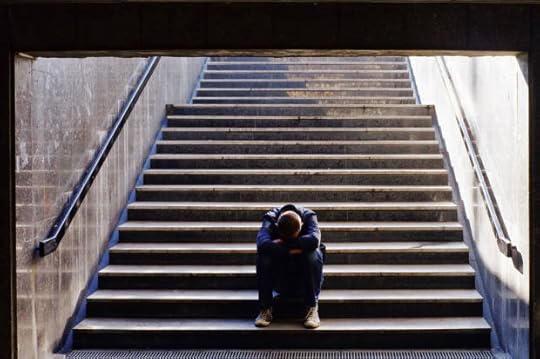
(Credit: Dariush M/Shutterstock)
Major depressive disorder affects nearly 16 million Americans a year, including me. Like many other Americans, I have been advised by a doctor to follow a routine of psychotherapy and medicine, which together are referred to as the most effective treatment for major depressive disorder.
Unfortunately, effective doesn’t also mean good, in my and many other scientists’ opinion. The lengthy side effect lists, the black box warnings – the strictest FDA warning that can be given, which in this case references the risk of suicide when taking an anti-depressant – and the need for an entire separate diagnosis of treatment-resistant depression makes me wonder if we can do better.
Not to say that medicine is not an important tool in treating depression, as many have found relief that way. Currently, around one in 10 Americans are taking SSRIs, or serotonin selective re-uptake inhibitors, the gold standard drug to treat depression and anxiety disorders. Yet pushback from the scientific community and users of these drugs over the negative effects is mounting. Just this year, a review of 131 clinical trials using SSRIs totally questioned their clinical relevance and suggested their net effect was more harmful than helpful.
With future drug development in psychiatry creeping along and being described by our brightest research minds as a daunting task, it seems appropriate to look to other tools to build a more efficacious treatment for major depressive disorder and other mental illnesses.
Interestingly enough, that better treatment may just be as simple as heating yourself up.
A collaborative effort, led by psychiatrist Clemens Janssen at University of Wisconsin–Madison, piloted the first ever double blind clinical trial to try and show that hyperthermia can relieve symptoms of major depressive disorder better than SRRIs can – and that it can do so without any of the dreadful side effects like extreme weight gain, panic attacks, suicide attempts, insomnia, or sexual dysfunction that can accompany those drugs. At most, patients experiencing mild hyperthermia treatments experience dehydration, nausea, and headaches. The results sound too good to be true.
The study enrolled men and women ages 18 to 65 who had major depressive disorder for at least four weeks prior to joining. None of the participants were receiving pharmaceutical treatments during the study, and they were also asked to take the Hamilton Depression Rating Scale, a questionnaire used to standardize and understand the severity of the individual’s depression across multiple time points in the study. In total, 16 participants underwent treatment and 14 underwent a control treatment that mimicked the effects without duplicating them.
To induce whole-body hyperthermia, the 16 participants laid down in a device that covered and isolated their bodies from the neck down. Inside the chamber, infrared lights aimed at their chest and legs heated their body to 38.5°C (101.3°F). It took 107 minutes, on average, to increase core body temperature to this target, and then the heating machinery was turned off and a 60 minute cool-down period was initiated. For the control group, all conditions were the same, except a heat fan was used to warm participants, so they thought they were receiving an active treatment. That group’s body temperatures were only increased to 99 degrees Fahrenheit, significantly lower than the hyperthermia group.
Following the procedure, each group was asked if they they believed to have received that active treatment or the sham one. For the control group, 71.4 percent of the participants thought they received the active treatment, whereas 93.8 percent of the patients that actually received whole-body hyperthermia guessed right. Each group was then asked to take the Hamilton Depression Rating Scale one, two, four, and six weeks after the treatment.
The group that received whole-body hyperthermia had an average decrease of 6.53 points in the Hamilton Depression Rating Scale one week after treatment compared to the control group. At six weeks, the average comparative decrease was 4.27. The effect size, a measure that shows how well the treatment worked, was 1.66 after six weeks. For reference, the best anti-depressant medications usually show a decrease of three to four points on the Hamilton Depression Rating Scale, and their effect size is usually about 0.35. This suggests that hyperthermia treatments could be four times as effective as the average drug.
Early reactions to the paper have been extremely skeptical. Researchers suggested the statistics were off – and they were, due to a statistical error in the analysis. But even after corrections the claims still hold true.Critics also easily point out that the sample size was too small. It is, but other groups have begun to replicate this data in newer studies and are seeing similar results.
As the study holds up against scrutiny, it becomes more convincing that this may not be too good to be true – that hyperthermia may become the best clinically validated treatment to help those who suffer from major depressive disorder.
Admittedly, I find joy in the ripple effect that this study and others have started to create and sustain in psychiatric disease research, which suggests that medicinal treatments for depression and anxiety may not be as effective as drug-free procedural treatments. Recently, some interesting data has shown that core body temperature increases leads to modulation of the same neural circuits that SSRIs act on, the most compelling piece of data that argues against the placebo effect explaining this whole thing.
It seems unorthodox and even illogical at first glance, but when the data aligns with the treatments, it’s exciting to see how simple and safe some of the solutions to our biggest problems can be.
Peer Commentary
Ana Gorelova: This reminds me of the saunas and banyas (bathhouses warmed up to extremely high temperatures, 170°F and above) that have enormous cultural value in northern countries (Finland, the Baltics, Russia). Incidentally, northern populations also have higher rates of seasonal affective disorder and depression. Of course, correlation is not equal to causation, but I wonder if this is where authors got an idea for the study from. If their results hold up it might potentially explain the science behind a centuries-old tradition.
Brooke Dulka: I also thought of seasonal affective disorder when I read this paper. However, although living in colder climates is correlated to rates of seasonal affective disorder, I believe that this is more of a problem with reduced light rather than temperature. That being said, that makes the results of this study all the more interesting.
I had a thought about seasonal affective disorder and circadian rhythms, but then I looked it up and, actually, circadian rhythms are remarkably insensitive to temperature.
Jack Barton: It’s not something I had ever come across previously, but the animal research suggests that hyperthermia as an antidepressant is plausible. However, self-report is a fickle beast when it comes to studies like this. I don’t think the sham conditions in this study are terrible, but it is clear that participants seemed to know almost unanimously that they were in the active arm.
The next clear, and more convincing step, would be to test the effect of hyperthermia on the brain structures in humans (e.g. ralphe nuclei). That would, at least in part, side-step the placebo/self-report issue and shed some light on the potential mechanisms.
A parent’s ultimate guide to YouTube kids
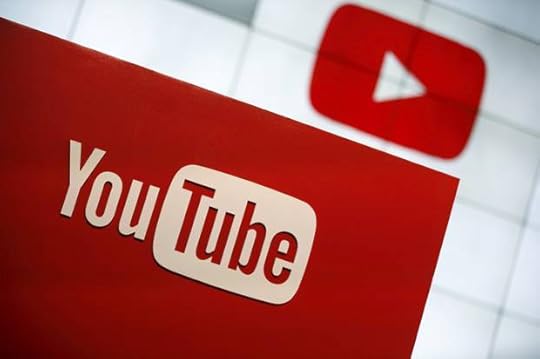
(Credit: Reuters//Lucy Nicholson)
So many kids love watching videos on YouTube, it seemed like a slam dunk for Google to create a special app specifically for the online video service’s youngest fans. And while YouTube Kids offers a colorful, easy-to-navigate environment, a wide range of high-quality videos, a few parental controls, and fun features for kids, it’s been dogged by concerns over its advertising, branded content, and inappropriate clips slipping through the curation process. So is YouTube Kids right for kids — or not?
With its whimsical visuals, silly sound effects, and picture-based navigation, YouTube Kids is fun and friendly — and doesn’t look at all like its parent site. Kids can roam through a vast menu of YouTube videos geared toward their age group by swiping left and right, or they can view channels through the categories at the top of the screen. Despite the drawbacks, YouTube Kids definitely has the potential to be a family’s go-to for kids to watch videos online — if you supervise and enable safety settings.
Read Common Sense Media’s full review of YouTube Kids, and learn more about how it works and how to use it safely (if at all) with answers to parents most frequently asked questions below.
What is YouTube Kids?
YouTube Kids is a kid-targeted version of YouTube that features curated, ad-supported TV shows, music, educational videos, and user-created content. You can create user profiles for each of your kids, so the app can tailor its selections individually. One of the best features of YouTube Kids is the timer, which lets you set a limit (up to an hour) for your kids to play on the app.
What type of videos are on YouTube Kids?
“Shows” features clips and full episodes of popular children’s programming (like Winnie the Poohand Thomas and Friends); “Music” clips include classic and contemporary kids’ songs. The “Learning” section includes access to education-focused clips from sources including Khan Academy, PBS Kids, and TED-Ed, and the “Explore” section features a sprawling range of user-created content, toy-related videos (including many “unboxing” clips), and a more random array of kid-friendly content, as well as channels created by brands such as McDonald’s.
Is YouTube Kids safe?
Parents who download the app assuming that a live human being — or a team of them — hand-select the videos and carefully sort them are often surprised to find out how the curation actually works. YouTube Kids is technically a portal to the main YouTube service. Using what Google calls “a mix of automated analysis and user input,” it filters out the grown-up stuff and funnels the kid stuff to the app … mostly. Inappropriate videos can make it past the filters, and users have reported seeing nudity, alcohol, and profanity, as well as fast food and junk food ads that push unhealthy eating. On the plus side for parents, YouTube offers fair warning that kids may see something that you don’t want them to see and you can block and report inappropriate videos.
Are there ads on YouTube Kids?
Some of the videos have ads, like on YouTube. If parents sign up for a YouTube Red subscription, there are no ads, and kids can watch offline. But kids will still have access to branded channels from fast food or toy companies.
How do I set parental controls on YouTube Kids?
YouTube Kids offers a few basic parental controls. To access these settings, you unlock the “grown-ups only” section by using either a random passcode (written out so that pre-readers can’t use it) or a custom passcode you create. Then you log into your Google account and select the user whose profile you want to add controls to. The main parental control setting is the ability to allow your kid to search for videos in the app or not. (It’s safer not to.) You can also clear the history and pause your watch history, which mainly affects how the app serves up videos.
How do I set content filters on YouTube Kids?
YouTube Kids doesn’t offer content filters. It tries to show “younger” or “older” videos based on the user’s age, what you’ve watched, and terms you’ve searched for. If there’s something you definitely don’t want your kids to see, you’ll have to block those videos when they come up.
How do you set up profiles in YouTube Kids?
YouTube Kids lets you have different profiles for each user — but the profiles simply allow YouTube to track that user’s search history and video views. Once you download the app, you log in with your Google account and set up profiles for your kids in the settings menu. Kids will like the ability to select their avatar and their own passcode (which parents can override) to prevent snooping siblings from sneaking into their profile.
What age is YouTube Kids for?
The app store says YouTube Kids is for 4 and older, but Common Sense Media recommends it for kids 7 and older. In addition to the ads, the commercialism, and the potential to see inappropriate videos, we think it’s better to wait until kids are slightly more mature or to view videos together with your younger children.
Why does YouTube Kids have disturbing videos?
You may have heard about or seen some videos that look like they’re for kids but are clearly not. These videos may use familiar characters from kids’ TV shows, such as Caillou or Peppa Pig, or they may use cartoon graphics such as cars and trucks. The videos have seemingly kid-friendly titles and begin normally, but then become strange and even extremely disturbing. Whoever creates these videos — which have been termed YouTube Poop — has figured out how to use tags (the code that helps Google categorize content) to fool the algorithm. Disturbing videos are more common on the main YouTube channel, but they could pop up in the kid’s app, especially if you allow your kids to search.
What is YouTube doing to make the app safer for kids?
In addition to parental controls, content filters, and turning off search, YouTube has made some policy changes to try to improve the app. The company announced that when videos are flagged on the main YouTube app, they will automatically be age-restricted and therefore blocked from the Kids app. It will also remove the financial incentive of producers of some of this strange content, by eliminating their ability to serve ads on the age-restricted content. However, this all relies on users finding and flagging the inappropriate content before they can pass through to the Kids app, which isn’t foolproof.
What can I do if my kid sees disturbing content?
As with any media product that contains user-generated content, it’s wise to supervise closely and watch together when you can. If you find a disturbing video, you can block it, which makes sure the video doesn’t surface again. You can also report it, which alerts YouTube of the offensive content so that their team can review and remove it if necessary. If your kids are scared by stuff they see, try these methods to comfort them.
What are the alternatives to YouTube Kids?
It might be the biggest, but YouTube isn’t the only fish in the sea. You can find streaming video apps with stricter parental controls, tighter curation, various video sources, and other useful, family-friendly features. Give these a try.
The problem with subsidizing nuclear power and coal

(AP Photo/John Bazemore, File) (Credit: AP)
Within the next month, energy watchers expect the Federal Energy Regulatory Commission to act on an order from Energy Secretary Rick Perry that would create new pricing rules for certain power plants that can store fuel on site to support grid resilience. This initiative seeks to protect coal-fired and nuclear power plants that are struggling to compete with cheaper energy sources.
Perry’s proposed rule applies to plants that operate in regions with deregulated power markets, where utilities normally compete to deliver electricity at the lowest price. To qualify, plants would have to keep a 90-day fuel supply on site. Each qualified plant would be allowed to “recover its fully allocated costs.”
In other words, plant owners would be able to charge enough to cover a range of costs, including operating costs, costs of capital and debt, and investor returns. Federal Energy Regulatory Commission Chair Neil Chatterjee has stated that the extra money to keep coal and nuclear plants running “would come from customers in that region, who need the reliability.”
Will consumers willingly pay higher bills to support coal and nuclear power? My research group has analyzed another option: Going off-grid and generating electricity with home-based solar energy systems. Recently we compared the cost of grid power to off-grid renewable generation in Michigan’s Upper Peninsula. We found that within a few years, a majority of single-family owner-occupied households could afford the necessary generating systems and economically defect from the grid.
Is reliable electricity at risk?
Coal and nuclear technology are struggling to compete as prices decline for solar, wind and natural gas generation. Some states, along with the Trump administration, are worried about early retirements of coal and nuclear plants and looking for ways to avoid more.

Natural gas and renewables account for nearly all new U.S. generating capacity added since the year 2000.
EIA
In early 2017 Perry commissioned a grid reliability study, which found that cheap natural gas and flattening electricity demand were the main drivers for coal and nuclear plant retirements, and projected more closures to come. Shortly after the report was released, Perry proposed this rule.
Many responses have been critical. Jon Wellinghoff, who chaired the Federal Energy Regulatory Commission under Presidents George W. Bush and Barack Obama, said: “It’s gonna be as expensive as hell. Expensive as it can be because we will be paying the full freight on coal and nuclear plants.”
ICF Consulting estimates that Perry’s proposal would cost ratepayers an extra US$800 million to $3.8 billion annually through 2030. Others calculate the cost at up to $10.6 billion annually, depending on the rule’s design.
What can consumers do?
If retail prices do actually go up as a result of Perry’s proposed changes to the wholesale energy markets the Federal Energy Regulatory Commission regulates, ratepayers can manage their electric bills in three ways. First, they can reduce electricity use by adopting efficient technologies, such as Energy Star products, and conserve energy through steps such as turning off lights.
In areas with favorable rules, consumers can save much more by installing rooftop solar power while staying connected to the grid. The key requirement is that their utility must allow net metering. Under this arrangement, when homes generate more electricity than they need, they can sell excess power into the grid and receive credit for it on their electric bills.
The levelized cost of electricity from solar is lower than grid electricity in most of America. This makes it normally profitable to use solar power to reduce household electricity bills, if homeowners can afford the up-front investment to install solar systems. The most solar-friendly states, which are mainly in the Northeast and on the West Coast, support solar with tax credits, rebates and other policies. However, home solar systems are even becoming popular in southern and Appalachian states that provide less support for renewable energy.

The U.S. Department of Energy’s SunShot program has already reached its 2020 targets for reducing the cost of utility solar power.
DOE
But widespread adoption of home solar power can reduce utility profits and shift electricity demand patterns in ways that require power companies to make upgrades as their customer bases shrink. This conundrum has sparked debate over a scenario known as the “utility death spiral”: As customers leave the grid, utilities sell less energy and have to raise prices to cover their fixed costs. More customers install solar in response, pushing electricity prices up further and driving more customers away.
In response, some utilities have tried to slow the move to solar through steps such as distorting net metering rules and campaigning to limit access to net metering.
Defecting from the grid
Such tactics raise the cost of grid-tied solar systems and frustrate many customers. They give consumers incentive to pursue a third option: Disconnecting from their utilities and relying on on-site solar generation, supported by energy storage (and sometimes backup) systems.
One recent study investigated state-level markets in New York, Kentucky, Texas, California and Hawaii. It found that solar hybrid systems were already profitable for consumers in some places, particularly Hawaii, and could become so for tens of millions of customers over the next several decades.
My team studied the potential for grid defection in northern Michigan, one of the most challenging places in the United States to go solar. Winters there are dark and brutally cold, so households can rely entirely on solar power only in warm seasons.
However, solar coupled with so-called cogeneration systems and batteries can provide enough energy on cold, cloudy winter days. These small-scale combined heat and power systems, which are made mainly in Japan, usually run on natural gas and produce heat as they generate electricity. They can function year-round and are most effective in the winter when solar production is low. The costs of these hybrid systems are declining.

Recent advances in cogeneration, battery storage and solar photovoltaic technology have made going off-grid technically feasible.
Michigan Tech University, CC BY-ND
In our study we first calculated electricity demand by household size and type. Second, we compared costs of conventional grid electricity to an off-grid solar-hybrid system. Finally, to assess how many households could afford to invest in solar-hybrid systems, we analyzed household incomes and minimum credit score requirements for financing from the Michigan Saves program, which makes loans to help residents reduce energy costs.
We found that by 2020, about 75 percent of year-round Upper Peninsula households could meet their electricity needs using off-grid solar systems at less cost than staying on the grid. Not all households could afford to invest in these systems, but we found that by 2020, about 65 percent of single-family owner-occupied households would have access to affordable capital to purchase hybrid systems.
 Our findings suggest that if Perry’s proposal is enacted and raises rates, it could drive many ratepayers to go off-grid, leaving fewer customers to cover the costs of maintaining the grid. This could raise electric rates substantially for utilities’ remaining customers, potentially triggering further defections. In sum, subsidizing coal and nuclear plants could destabilize the electric power system instead of strengthening it.
Our findings suggest that if Perry’s proposal is enacted and raises rates, it could drive many ratepayers to go off-grid, leaving fewer customers to cover the costs of maintaining the grid. This could raise electric rates substantially for utilities’ remaining customers, potentially triggering further defections. In sum, subsidizing coal and nuclear plants could destabilize the electric power system instead of strengthening it.
Joshua M. Pearce, Professor, Michigan Technological University





